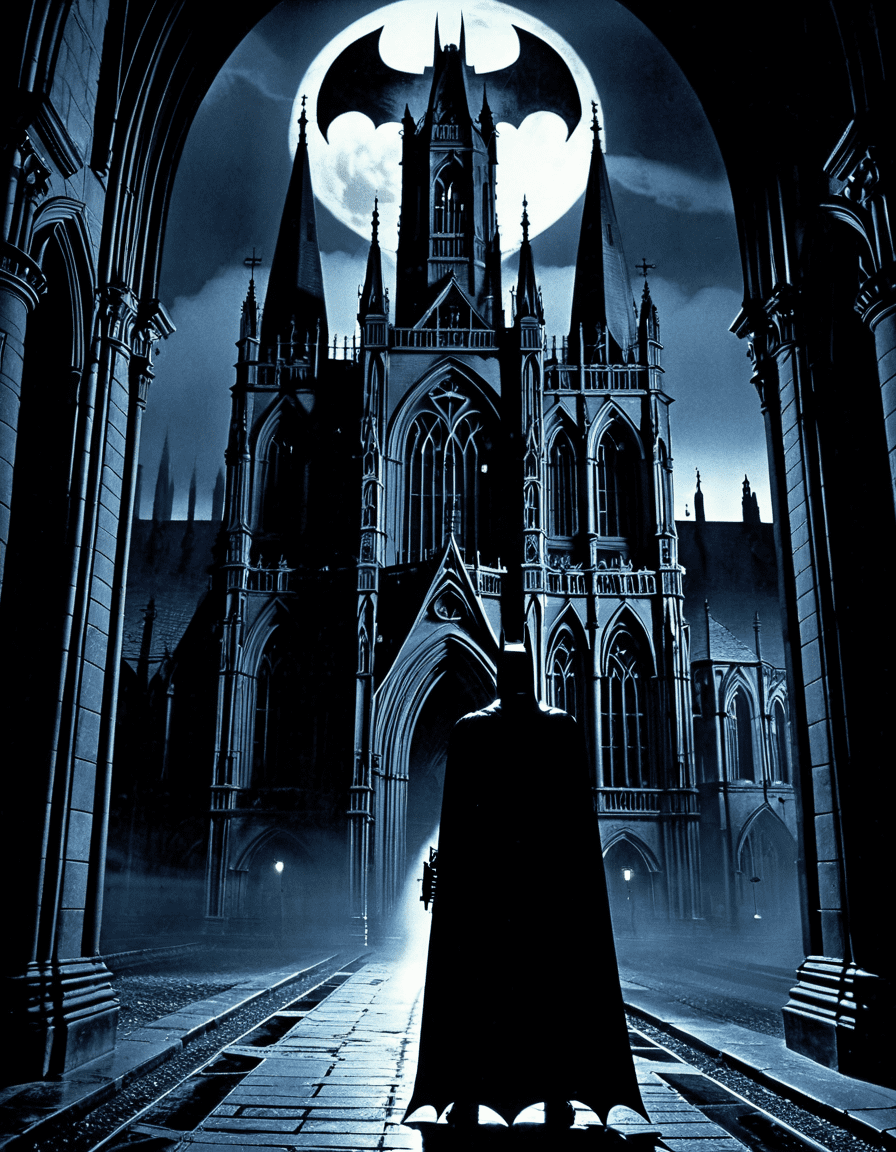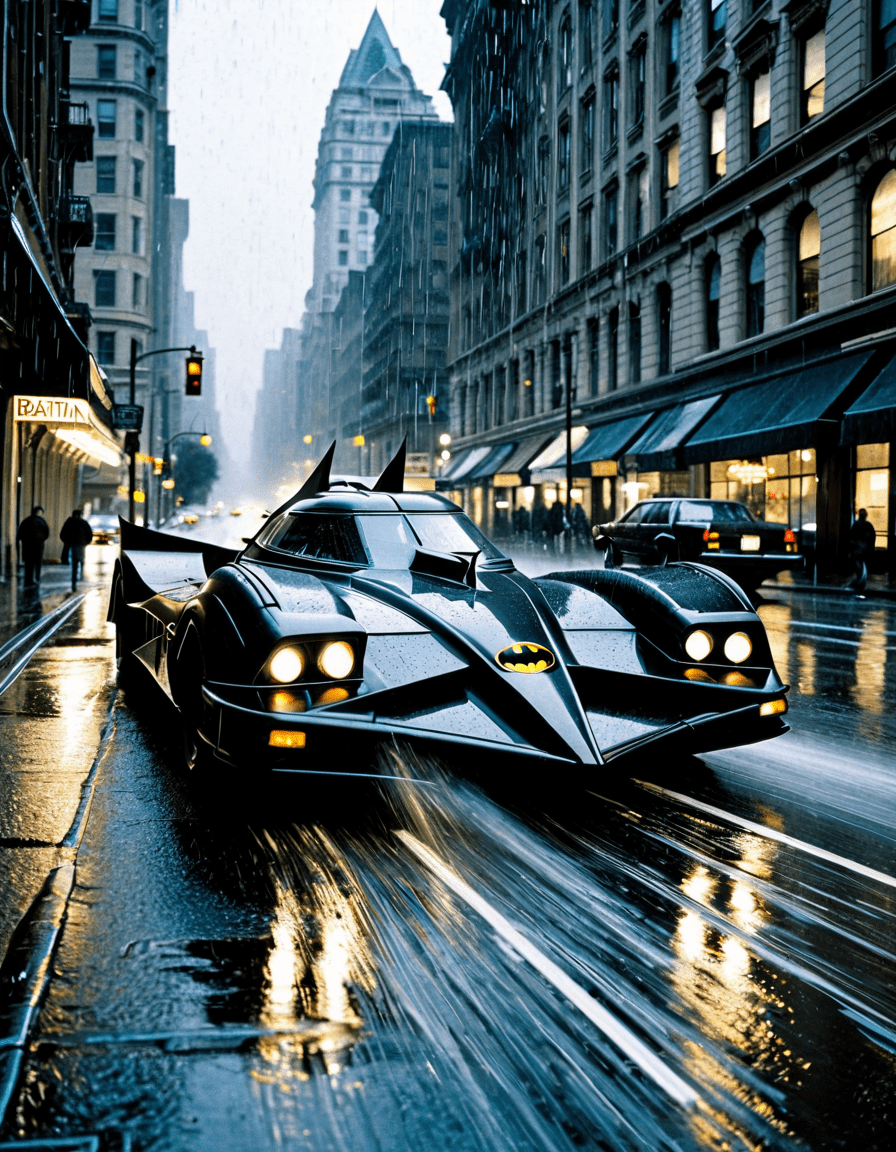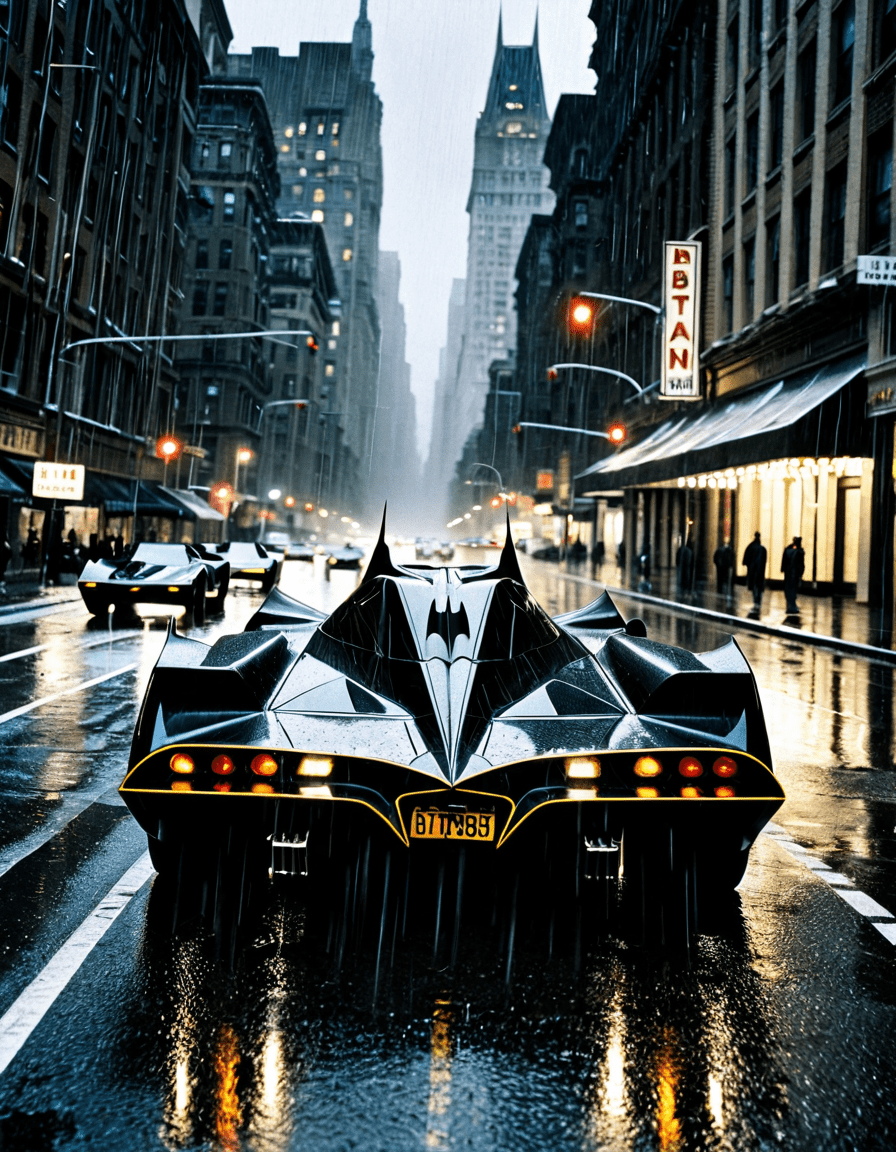The release of Batman in 1989 wasn’t just another superhero flick; it marked a transformative moment in superhero cinema. Directed by Tim Burton and featuring Michael Keaton as the caped crusader, this film shifted the landscape, setting new standards in visual storytelling and character depth. With its spectacular style and engaging narrative, Batman 1989 laid the groundwork that would influence a multitude of superhero adaptations to come. So, strap in as we explore the lasting impact of this film, which remains a beloved cult classic amongst film nerds and fanboys alike.

Top 7 Ways Batman 1989 Redefined Superhero Films
1. The Artistic Vision of Tim Burton
You can’t talk about Batman 1989 without mentioning Tim Burton’s artistic vision. His distinctive, gothic aesthetic with its dark tones and intricate sets starkly contrasted the campy superhero flicks of the past. Picture this: the towering, grim cityscapes of Gotham City, draped in shadows and surrounded by unsettlingly charming architecture. This visual uniqueness extended far beyond mere looks; it introduced a mood that would pave the way for darker narratives in future superhero films, like the intense themes explored in Hulk 2003.
Burton’s vision helped reimagine how superhero films could be portrayed on screen. Instead of vibrant colors and light-hearted scripts, we dived into a world where heroes grappled with their inner demons. This complex style inspired a wave of filmmakers who followed, allowing for rich storytelling that strayed from the predictable superhero formula.
2. The Enduring Legacy of Michael Keaton’s Performance
Let’s give credit where credit’s due: Michael Keaton’s portrayal of Bruce Wayne/Batman brought something fresh to the table. His ability to embody both the vulnerable and the menacing aspects of the character made Batman relatable in ways we hadn’t seen before. Unlike previous depictions that often leaned heavily into caricature, Keaton’s performance added a psychological dimension that resonated with audiences then—and still does today.
This layered portrayal has paved the way for future superheroes who must navigate similar struggles. Think about it: Tony Stark’s complexities in the Marvel Cinematic Universe and Thor’s journey of self-discovery play into the rich tapestry of character work that Batman 1989 helped inspire. It’s all about finding that balance, and Keaton nailed it.
3. The Memorable Villainy of Jack Nicholson
And who could forget Jack Nicholson’s unforgettable performance as the Joker? His blend of charm and mania set a high bar for any future portrayals of this iconic villain. Nicholson’s Joker became the quintessential enemy—not just for Batman, but for all superhero films that followed. His performance captivated audiences with an eerie charisma, making him a perfect foil for Keaton’s Batman.
This impact stretched beyond the film itself. It influenced the portrayals of villains across the superhero genre, culminating in Heath Ledger’s dark and chaotic take on the Joker in The Dark Knight. Nicholson’s Joker stood as a benchmark against which all future Marvel rivals would be measured, showcasing the allure and depth that a well-crafted villain can bring to a story.
4. Blockbuster Marketing and Merchandising Strategies
Batman 1989 also broke new ground in the marketing realm. The film didn’t simply rely on its release for box office success; it launched a full-scale merchandising campaign that included everything from action figures to apparel. This savvy strategy not only captured public interest but also opened the floodgates for product tie-ins that became the norm in movies, especially for franchise hits like Transformers 2007.
Through merchandising, Batman 1989 achieved a level of cultural penetration that few films could. Kids clamored for action figures, and the public couldn’t get enough of Batman-themed gear. The combination of marketing and merchandising strategies has since been replicated in countless blockbuster films, proving that good marketing can be just as important as a captivating story.
5. Musical Influence of Danny Elfman’s Score
Let’s take a moment to appreciate the score by Danny Elfman. His hauntingly beautiful composition for Batman 1989 created an emotional backbone for the film, giving it a sense of gravitas. The standout theme became legendary, so much so that it’s often recognized alongside John Williams’ iconic scores like those from Star Wars.
This powerful music did more than bring the story to life; it became part of our cultural lexicon. Many superhero films thereafter strived to incorporate strong musical identity, enriching their narratives and deepening the audience’s connection to the storyline. It reminds us just how essential a great score is in setting the tone for any cinematic experience.
6. Establishing a Darker Tone in Superhero Narratives
Before Batman 1989, most superhero movies were light-hearted and cheerful. However, here came Burton with a darker take, exploring psychological themes and moral ambiguities that became staples in subsequent films like X-Men. The exploration of complex identities and ethical dilemmas transformed the genre, showing that superheroes could be deeply flawed and relatable.
Movies that followed embraced this darker tone, enabling stories that tackled issues like redemption and inner conflict. These narratives became much richer, proving that audiences were hungry for more than just good-versus-evil plotlines. It was time to dive deeper into the psyche of both heroes and villains.
7. The Birth of a Franchise Model
Lastly, Batman 1989 kickstarted what would become a wildly successful franchise model. After its box office triumph, sequels and spin-offs emerged, creating an entire universe of stories that studios across Hollywood scrambled to replicate. This model paved the way for expansive cinematic universes like the Marvel Cinematic Universe, showcasing interconnected storytelling that audiences adored.
The film’s success inspired studios to think bigger and bolder with sequels. The interconnected web of stories we see today in franchises like Hero Wars owes much to the groundbreaking groundwork laid by Batman 1989. The notion that superheroes could dominate the box office with consecutive films became embedded in cinematic strategy.

Impact on Future Cinematic Works and Trends
Batman 1989 created seismic shifts in the world of cinema. It motivated filmmakers and writers to approach superhero narratives with renewed creativity, encouraging serious storytelling and original character interpretations. The legacy of this film can be traced through countless projects today, showing how foundational it remains to contemporary superhero cinema.
Think about Divergent Series or even Transformers, which reframed how studios approach adaptation and franchise-building. They borrow threads from what Batman 1989 established: complex narratives, a darker tone, and characters facing real struggles.
As we look at the current landscape of superhero films, it’s evident that the impact of Batman 1989 continues to resonate. The innovative storytelling and visual artistry challenged what superhero movies could be, reshaping audience expectations for the decades that followed. Without a doubt, filmmakers still draw inspiration from this iconic work, ensuring that Batman’s legacy endures and thrives in cinemas, streaming platforms, and more.
In conclusion, Batman 1989 stands as a landmark in filmmaking—one that reshaped genres and influenced storytelling for generations. It’s a film worth revisiting, not just for its nostalgic value but for understanding its profound impact on the art of cinema. Today, amidst an ever-growing pool of superhero films, one can only wonder how future filmmakers will utilize the foundations laid by Batman 1989 to create the next wave of compelling stories.
Batman 1989: Fun Trivia and Interesting Facts
A Bold New Direction
Did you know that Batman 1989 was a groundbreaking film that changed how superhero stories were approached in cinema? Directed by Tim Burton, it brought a darker and more sophisticated tone to the superhero genre, paving the way for future films. This flick opened the door for more serious portrayals in superhero stories, leading to classics like The Dark Knight. Mixing elements of gothic art and style with a compelling narrative, it showed that superhero films could have a depth and intensity that audiences craved. Interestingly, the set design was so immersive that it felt like stepping into another world, almost like relaxing in small recliners while enjoying a grand spectacle.
Iconic Performances
Michael Keaton’s take on Batman also shook things up. Initially, many fans were skeptical about his casting, but his unique portrayal won over critics and audiences alike. His chemistry with Jack Nicholson, who played the Joker, transformed their dynamic into one of cinema’s most memorable rivalries. Their performances were so electric that they rivaled some classic duos like Gene Kelly and his partners in the golden age of film. Plus, did you know that Nicholson improvised many of his lines? This added an unpredictable twist to the character, enhancing his already chaotic nature.
Cult Classic Status
Over the years, Batman 1989 has gained a cult following and remains a topic of conversation among cinephiles. Its influence is seen even today, and it has inspired a vast array of merchandise, from deck stain colors that recall Gotham’s dark aesthetics to comic book spin-offs. The film’s iconic score by Danny Elfman has become synonymous with Batman itself, showcasing how music can elevate storytelling. Fans often reminisce about how they felt when they first watched it, as if they were kids again, on the edge of their seats, just like when you see your neighbor’s dog chase a ball next door.
From memorable action sequences to its lasting legacy in pop culture, Batman 1989 set the stage for all superhero films that followed. It’s fascinating to think how a film can evoke such strong emotions, just as when you borrow something that reminds you of a cherished memory, like picking up a book you once lent a friend—much like the plot twists and turns in Something Borrowed Whether you’re revisiting it after years or seeing it for the first time, there’s always something new to discover amidst its richly layered storytelling.





